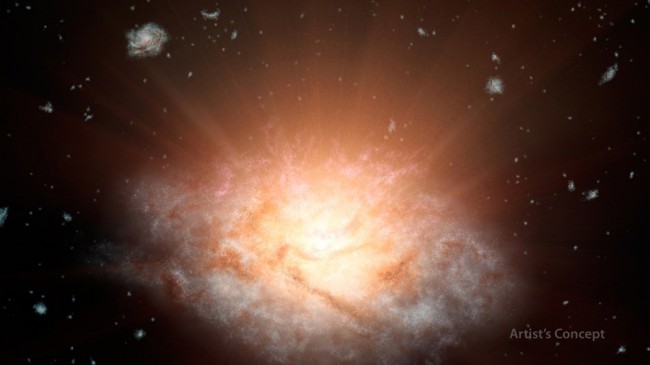This artist's concept depicts the current record holder for the most luminous galaxy in the universe.
NASA/JPL-Caltech
The galaxy belongs to a new class of objects — extremely luminous infrared galaxies.
“We are looking at a very intense phase of galaxy evolution,” said Chao-Wei Tsai of NASA’s Jet Propulsion Laboratory (JPL) in Pasadena, California. “This dazzling light may be from the main growth spurt of the galaxy’s black hole.”
The brilliant galaxy, known as WISE J224607.57-052635.0, may have a behemoth black hole at its belly, gorging itself on gas. Supermassive black holes draw gas and matter into a disk around them, heating the disk to roaring temperatures of millions of degrees and blasting out high-energy, visible, ultraviolet, and X-ray light. The light is blocked by surrounding cocoons of dust. As the dust heats up, it radiates infrared light.
Immense black holes are common at the cores of galaxies, but finding one this big so “far back” in the cosmos is rare. Because light from the galaxy hosting the black hole has traveled 12.5 billion years to reach us, astronomers are seeing the object as it was in the distant past. The black hole was already billions of times the mass of our Sun when our universe was only a tenth of its present age of 13.8 billion years.
The new study outlines three reasons why the black holes in the ELIRGs could have grown so massive. First, they may have been born big. In other words, the “seeds,” or embryonic black holes, might be bigger than thought possible.

